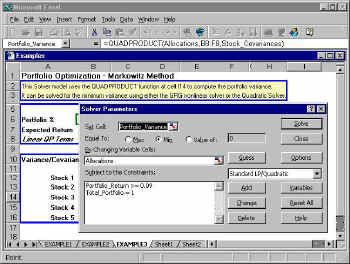
This poster gives explicit formulas for the solutions to quadratic, cubic, and quartic equations. Note: Click this link if Excel doesn’t show the Solver command. Set up this dialog box in the following steps to solve our problem. The format of the Linearity Report is similar to that of the Answer Report : It lists each decision variable and constraint on a separate row, with its cell reference, a name as described for the Answer Report, the cell’s original and final. The Solver Parameters dialog box will appear. The purpose of the Linearity Report is to help you pinpoint nonlinear formulas in your model. This fact is known as the Abel-Ruffini theorem.Īlso of note, Wolfram sells a poster that discusses the solvability of polynomial equations, focusing particularly on techniques to solve a quintic (5th degree polynomial) equation. To solve this example using Solver, choose Data Analysis Solver. There cannot be explicit algebraic formulas for the general solutions to higher-degree polynomials, but proving this requires mathematics beyond precalculus (it is typically proved with Galois Theory now, though it was originally proved with other methods). Out of these, the quickest method to find the roots of the. These are completing the square method, factorizing the quadratic equation, using the quadratic formula, and the graphing technique. There are 4 methods to find the roots of a quadratic equation. Wikipedia's article on quartic functions has a lengthy process by which to get the solutions, but does not give an explicit formula.īeware that in the cubic and quartic formulas, depending on how the formula is expressed, the correctness of the answers likely depends on a particular choice of definition of principal roots for nonreal complex numbers and there are two different ways to define such a principal root. When we solve a quadratic equation we get two values of x. As the cubic formula is significantly more complex than the quadratic formula, the quartic formula is significantly more complex than the cubic formula. This above calculation or equations can be calculated with the help of Solver Add-in, with specific criteria. Its objective is a convex quadratic function of the decision variables, and all of its constraints must be linear functions of the variables. In this case, set 'To value' to 0.There is, in fact, a general formula for solving quartic (4th degree polynomial) equations. Example: For the profit of the extra 10, how many units need to be sold or what is the exact marks needed in the last semester of final exams to get the distinction. If a linear solver is used, there is the option to run a Linearity Check after the solve, which tries to make sure the problem was indeed linear.

If this is not the case, the linear solvers are very likely to return meaningless results.

To find the roots, set y = 0 and solve the quadratic equation 3x 2 - 12x + 9.5 = 0. Guide to the columns: Linear/Non-Linear: Linear solvers can only be used on problems where the adjustable cells appear linearly in the problem. For example, enter the value 0 into cell A2 and repeat steps 5 to 9. Excel finds the other solution if you start with an x-value closer to x = -1.

Click in the 'By changing cell' box and select cell A2. Click in the 'To value' box and type 24.5Ĩ. On the Data tab, in the Forecast group, click What-If Analysis.ħ. You can use Excel's Goal Seek feature to obtain the exact same result. But what if we want to know x for any given y? For example, y = 24.5.


 0 kommentar(er)
0 kommentar(er)
